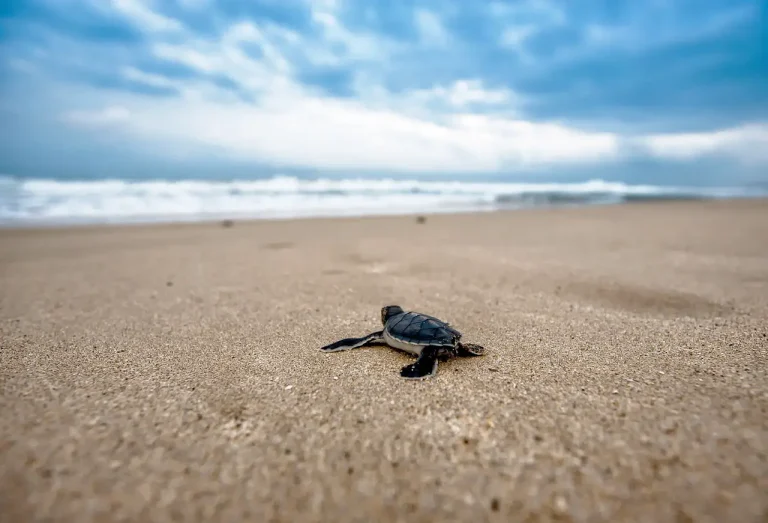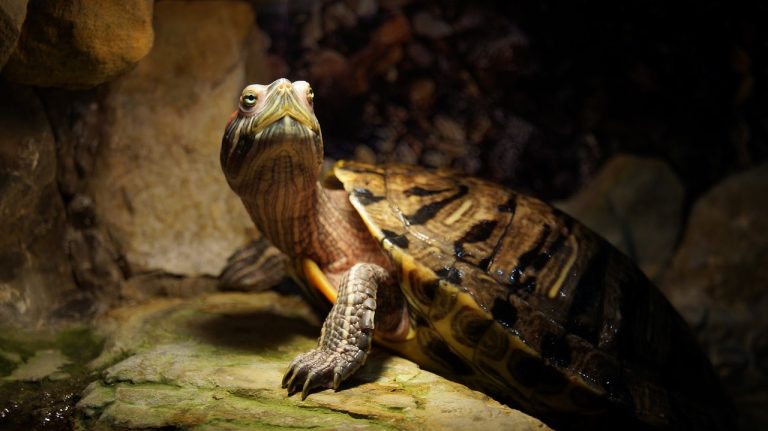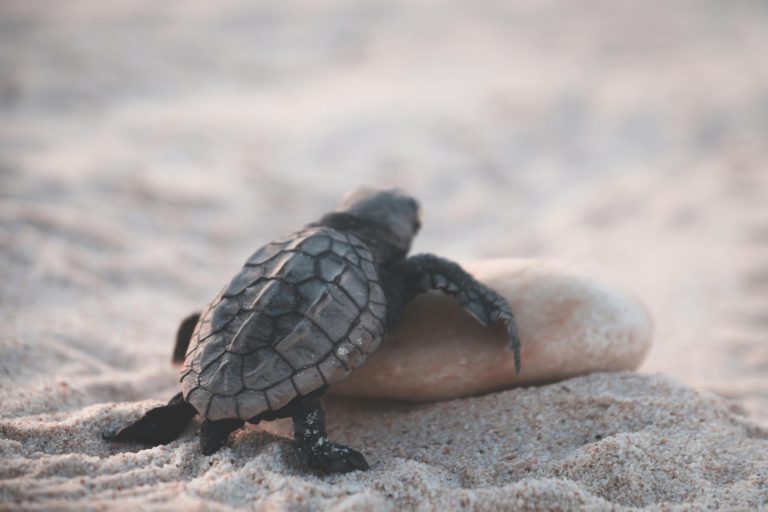Do Sea Turtles Need Air?
Sea turtles, just like all living beings, require oxygen to sustain themselves. These remarkable creatures of the ocean spend the majority of their lives submerged in the deep sea. Consequently, it’s a common pondering among many individuals: how exactly do sea turtles procure oxygen? Do they rely on air like us, or is there another mechanism at play within the watery depths?
Being reptiles, sea turtles are not equipped to breathe underwater. They depend on air for their survival, especially since they must return to land to carry out their reproductive activities. However, sea turtles possess remarkable adaptations that enable them to thrive in their aquatic habitat. These adaptations allow them to remain submerged for extended periods without needing to surface for air.
In this piece, I’ll delve into the fascinating mechanisms behind how sea turtles breathe air. You’ll gain insight into their remarkable ability to stay submerged for extended periods without the need to surface for air.

How Do Sea Turtles Breathe?
Given that sea turtles spend the majority of their time engaged in activities such as swimming, hunting, and even sleeping beneath the waves, it’s understandable why many assume they can breathe underwater. However, the truth is that sea turtles do indeed require air to survive and must surface regularly to replenish their oxygen supply.
While it may seem like sea turtles can breathe underwater since they don’t need to fully emerge to take in air, their respiratory system is not equipped for underwater breathing. Instead, they have evolved a clever adaptation that allows them to remain submerged for extended periods without needing to surface completely.
Sea turtles possess external nares on their snouts, akin to the nostrils humans use to breathe air. When they need to replenish their oxygen supply, sea turtles can extend their necks to raise their snouts above the water’s surface. This clever adaptation allows them to take in air without the necessity of fully emerging from the water, enabling them to remain submerged for extended periods.
As sea turtles inhale air through their nares, it embarks on a journey through their respiratory system. The air travels down the lengthy and flexible trachea, a structure shaped by the turtle’s neck. Upon nearing the turtle’s heart, the trachea divides into two branches known as bronchi. Through these bronchi, oxygen is transported to the lungs.
Within the lungs, oxygen is absorbed and distributed to various parts of the turtle’s body. Sea turtles boast expansive lungs, facilitating greater oxygen storage. Consequently, they gain extended underwater endurance, as their ample lung capacity affords them more time beneath the waves.
Now, let’s delve into the unique aspect of sea turtle respiration compared to our own. Unlike us, where the rib cage expands and contracts to facilitate breathing, sea turtles have a distinct arrangement. Their rib cage is not separate but instead fused with their shell, precluding its use for pumping air in and out.
However, sea turtles possess specialized muscles within their shell, situated above the lungs on the rib cage. These muscles mimic the function of a conventional rib cage, enabling sea turtles to breathe air in and out of their lungs.
Remarkably, these muscles play a crucial role in facilitating breathing for turtles. As they move their flippers and neck, the pressure within their lungs adjusts, aiding in the inhalation and exhalation process, ensuring their lungs are adequately filled with air.
How Often Do Sea Turtles Need Air?
The duration sea turtles can hold their breath varies depending on their circumstances. When actively swimming and hunting in the water, sea turtles typically need to surface every few minutes to replenish their oxygen supply. However, during periods of rest or sleep underwater, they can hold their breath for hours at a time.
Indeed, the oxygen requirements of a sea turtle are influenced by its level of activity and stress. A stressed or active turtle expends more energy and thus requires a greater intake of oxygen to sustain its functionality. Conversely, when a turtle is at rest, it conserves energy by slowing down its metabolism and becoming nearly inactive. Consequently, during periods of rest, a turtle’s oxygen consumption decreases as its metabolic rate decreases, allowing it to maintain a prolonged period of submersion without the need for frequent resurfacing.
While sea turtles are indeed capable of holding their breath for extended periods, it’s important to note that they don’t do so indiscriminately. Sustaining prolonged breath-holding is a demanding task. Sea turtles rely on swimming and hunting for their survival, activities that require a steady supply of oxygen. Thus, they frequently surface to replenish their oxygen levels, ensuring they remain healthy and active during their aquatic pursuits.
How Long Can Sea Turtles Hold Their Breath?
Sea turtles exhibit remarkable versatility in their ability to hold their breath, ranging from a few minutes to several hours. This duration is contingent upon their activity level. Given their predominantly aquatic lifestyle, sea turtles often opt to sleep underwater. Depending on the species, they can remain submerged for anywhere between 4 to 7 hours without the need to surface for air.
The ability of sea turtles to remain submerged for extended periods during sleep is facilitated by their selection of stress-free environments. In these tranquil conditions, their heart rate decreases significantly, with a sleeping turtle often exhibiting only a single heartbeat every 9 minutes. This reduced metabolic activity translates to lower oxygen requirements, allowing them to prolong their underwater stay without the need for frequent resurfacing.
Can Sea Turtles Breathe Underwater?
Absolutely correct. Sea turtles, unlike fish, cannot extract oxygen from water through gills. They rely on breathing air and must come to the water’s surface to replenish their oxygen supply. Although they can hold their breath for extended periods, this is not equivalent to breathing underwater like fish. The misconception often arises due to their impressive breath-holding capabilities, but it’s essential to recognize that turtles, like humans, have lungs and need to access the air above the water surface for respiration.
Ever wondered how sea turtles manage to hibernate underwater for months during the cold season? It’s quite fascinating!
Some speculate that sea turtles can “breathe through their butt” via the cloaca, an opening near their tail. However, this isn’t precisely breathing. Sea turtles can draw in water through their cloaca, where they absorb oxygen. Nonetheless, this process doesn’t involve breathing oxygen in the conventional sense.
You’re probably aware that sea turtles can hold their breath for quite a while, especially when they’re not stressed out. To cope, they switch their metabolism from relying on oxygen (aerobic metabolism) to using stored glucose instead. This shift is known as anaerobic respiration. So, during their underwater hibernation, sea turtles don’t require a significant amount of oxygen to keep going.
Can Sea Turtles Drown?
Sea turtles are well known for their remarkable ability to hold their breath for hours and navigate the depths with finesse. However, like all creatures, they have their limitations. The duration a sea turtle can hold its breath varies depending on factors such as the environment and the situation at hand.
When stressed, a turtle’s heartbeat accelerates, signaling an increased need for oxygen. Consequently, it must swim to the surface more frequently to replenish its air supply. Failure to reach the surface in time can result in drowning, as water infiltrates the turtle’s lungs, compromising its ability to breathe.
Instances of sea turtles perishing within minutes of becoming entangled in nets are unfortunately common. The predicament restricts their ability to surface and replenish their lungs with oxygen, leading to heightened stress levels and a rapid depletion of stored oxygen. Another significant threat contributing to the mortality of sea turtles is their entanglement with plastics and debris discarded into the sea.
Conclusion
Absolutely, sea turtles indeed require air to sustain themselves, much like any other reptile. While they cannot breathe underwater, their remarkable ability to hold their breath for extended periods sets them apart as truly remarkable creatures.





![Do Turtles Bring Good Luck? [Feng Shui Turtles]](https://spreadhapiness.com/wp-content/uploads/2024/03/feng-1-768x512.jpg)